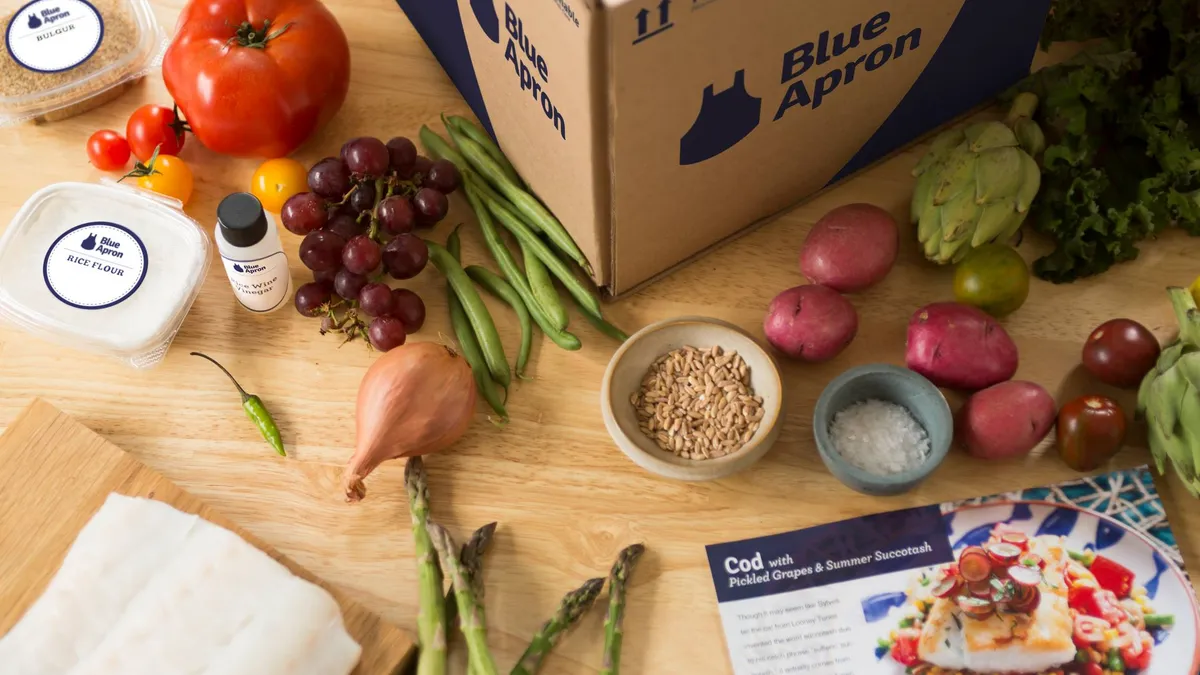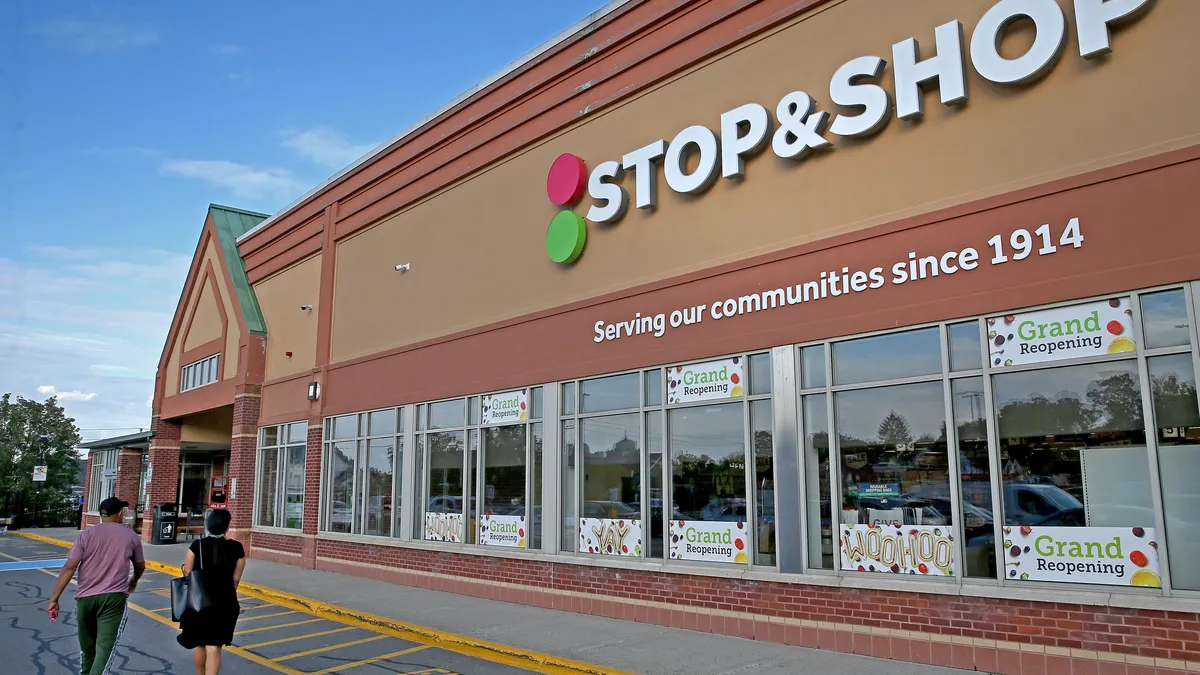Dive Brief:
- Blue Apron started marketing its initial public offering Monday, as an already competitive meal-kit industry faces a potential threat from Amazon and its attempt to purchase Whole Foods, according to Reuters.
- The company sharply increased the amount it is seeking to raise from $100 million earlier this month to about $510 million. Blue Apron said in the regulatory filing on Monday that it was looking to sell 30 million shares at between $15 to $17 per share.
- The latest figures come after Amazon said Friday it would buy Whole Foods in a $13.7 billion deal. Amazon has a small footprint in food delivery and meal kits. "It's going to take some time to figure out the impact of the acquisition on food delivery," Kathleen Smith, a manager of IPO-focused exchange-traded funds at Renaissance Capital, told Reuters.
Dive Insight:
Blue Apron, founded in 2012, noted several risks to its business in a filing earlier this month, including the high cost of acquiring and retaining customers, changing consumer preferences and the possibility that it may never post a profit. The company has shown while its revenue is growing so are its losses. In addition, as Blue Apron gains customers, it appears they are ordering less often and even when they do, are not paying as much.
Perhaps the most telling figure is that Blue Apron is significantly increasing how much money it is looking to raise in the IPO — from $100 million to now more than $500 million —a sign that it's going to need more ammo to win the prolonged meal kit fight.
The meal-kit delivery space is already a competitive one between Blue Apron, Hello Fresh, among others. Grocers such as Kroger and Publix also have jumped on the bandwagon early by offering branded meal kits that leverage their fresh capabilities and offer higher margins. Despite the name appeal and being associated closely with meal kits, Blue Apron's financial challenges are only likely to worsen as more retailers get into the delivery space for these prepackaged items and the company has to be more aggressive in acquiring and retaining customers.
And then there is the wildcard: Amazon. Fresh off of its $13.7 billion offer for organic and natural foods pioneer Whole Foods last week, the online giant has limited food delivery experience and work doling out meal kits— its exposure is largely limited to the 16 or so cities where AmzonFresh, its food delivery arm, has operations.
If the takeover of Whole Foods goes through, Amazon could tap into Whole Foods' 460 or so stores to expand its grocery operations and use the supermarket's knowledge of the organic space to peddle meal kits to the millions of affluent customers who visit the retailer or make purchases online. Amazon also has the lure of its millions of Prime members that could be another market for boosting its presence into meal kits. Moreover, Amazon could use the refrigeration systems at Whole Foods to make it easier to deliver fresh produce to consumers undamaged — a challenge that is not as prominent in delivering books, CDs or electronics.
To be sure, with more companies entering the meal kit business, Blue Apron has little choice but to expand —even if it may mean losing money —or else other competitors will cement relationships with the customer and Blue Apron will need to spend even more to catch up before it's too late. And even if Blue Apron does emerge victorious, who's to say meal kits will remain popular with consumers. While the ingredients come pre-measured, the meals take time to prepare and often costs more than what a person would pay if they bought the food at the store and made the item themselves at home.
For now, the future of meal kits is murky at best. Nielsen numbers show 36% of consumers say they’re interested in buying grocery-store meal kits even though online options exist. A recent Harris Poll found one in four adults have tried using a meal kit, and 70% returned following the first purchase. At the same time, NPD Group found only 3% of consumers, or 8 million people, have tried meal kit services — and about half of those quickly canceled their subscriptions.
Blue Apron, which has never posted a profit, faces numerous uncertainties and now will have to answer to the public markets that can be a lot less forgiving about its finances than investors were when it was private. The company likely has a lot of work to do to convince Wall Street and potential investors that its future justifies a lofty $3.2 billion valuation.











